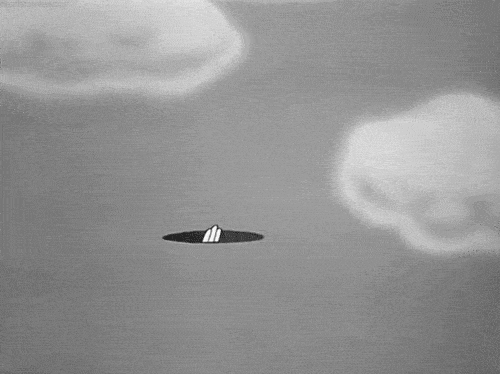
Black holes are among the most mysterious objects in the universe. Thanks to the painstaking efforts of scientists who have dedicated their lives to studying black holes, we now know a lot about these infinitely dense abysses. Chances are you won’t come across anything weirder than a black hole, and here are some mind-blowing facts to prove it.
1. A black hole is practically invisible
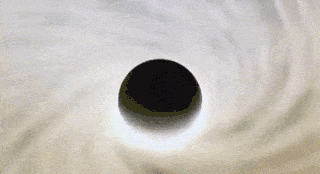
Nothing can escape the massive gravitational pull of a black hole, not even light. Hence, there are no photons that are reflected which can then be used to image the black hole as an object — it’s called ‘black hole’ for a reason, after all.
That’s not to say that we can’t detect them. Astrophysicists use proxies like the stream of matter and energy pulled from a ripped-apart star, for instance. The gas molecules start swirling around the black hole in the form of a disk and emit powerful X-rays. Black holes can also be detected by watching for motions of stars near the black hole. This brings us to our next slide…
2. This is what a black hole looks like

In April 2019, a huge collaboration of international scientists made a historic announcement: they have captured the first picture of a black hole. To be more precise, the researchers imaged the black hole’s event horizon (the point of no return). The image was constructed from data gathered by observatories all over the globe, which were combined to create a virtual telescope as big as the Earth.
“We have seen what we thought was unseeable,” said Sheperd Doeleman, an astronomer at Harvard University and the Harvard-Smithsonian Center for Astrophysics, who directed the project behind the black hole image. “We’ve exposed a part of our universe we’ve never seen before,” he added during a press conference at the National Press Club in Washington, D.C.
3. Black holes are anything but empty

Don’t let the name fool you. Rather, think of something immensely massive packed inside a very small volume. For instance, a star thousands of times more massive than the Sun squeezed into a sphere approximately the diameter of New York City. The result is a very strong gravitational field from which nothing can escape — only a more massive black hole. But even then the latter would ‘eat’ the former.
4. Black holes can reach gargantuan proportions (but could also be as small as a photon)

Black holes are classed into three types based on their mass, as follows:
- Stellar black holes. When a large star runs out of fuel it may collapse into a black hole. All black holes start out small then grow in size as they consume matter from around the galaxy.
- Supermassive black holes. Ranging from hundreds of thousands to billions of solar masses, supermassive black holes can form in a number of ways. For one, a small black hole can be fortunate enough to come across a large gas cloud. Hundreds of thousands of tiny black holes may also merge to form one mammoth hole. Finally, a stellar cluster, which is a group of many stars, can all collapse together to form a supermassive black hole.
- Intermediate black holes. It’s only recently that astrophysicists from NASA found that there are black holes with masses in between stellar and supermassive varieties. These mid-mass black holes were first discovered in 2014 and contain the mass of a few hundred to a few hundred thousand suns.
- BONUS: Primordial black holes. These hypothetical black holes could have formed shortly after the Big Bang following energy particle interactions. As such they imply a completely new mode of formation, different from the collapse of stars that birth the black holes we all know. NASA says these black holes act as dark matter.
Hypothetically speaking, the smallest black hole might the size of the Planck length — the smallest anything can be. The LHC at CERN is trying to produce quantum black holes at energies around 13 TeV (approximately 10-20 grams).
5. There’s a supermassive black hole at the heart of the Milky Way — it’s four million times more massive than the sun
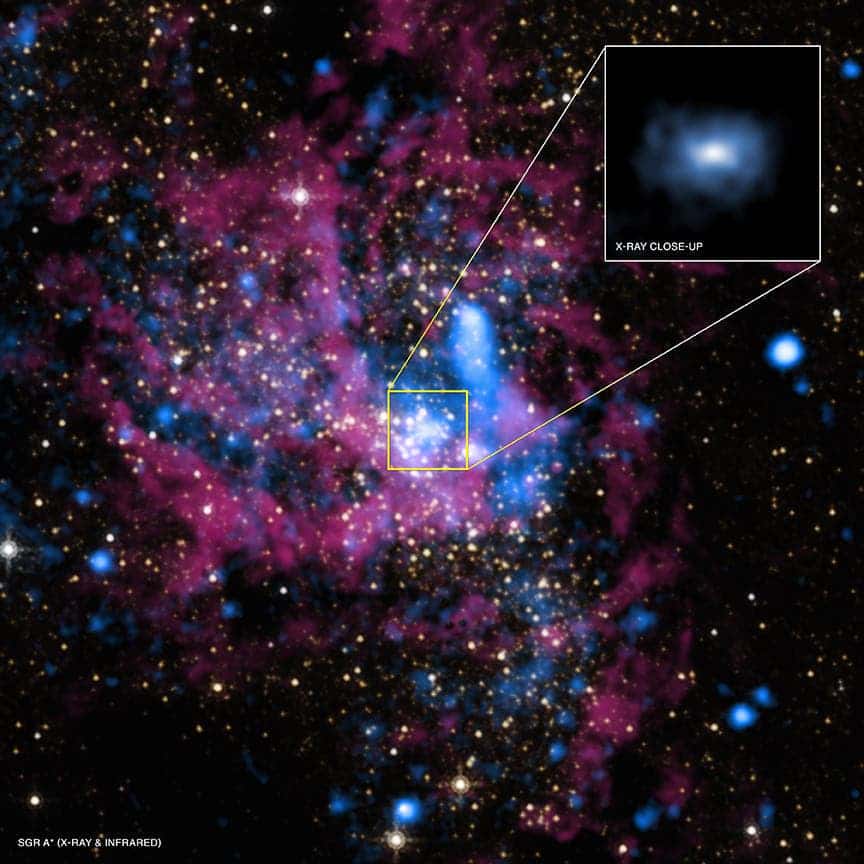
Virtually every galaxy has a supermassive black hole — a black hole typically millions of times more massive than the sun — at their center. Our local black hole is located in a region known as Sagittarius A* and lies around 26 000 light-years away from the Solar System. Thankfully, that’s comfortably far away. It’s about four million times the mass of the Sun, which in turn is about one million times more massive than the Earth.
According to ESA’s Herschel space observatory, up to one light-year away from the Milky Way’s center molecular gas is heated to around 1,000ºC. That’s much hotter than typical interstellar clouds, which are usually only a few tens of degrees above the –273ºC of absolute zero.
6. The idea of a black hole-like object has been around for centuries
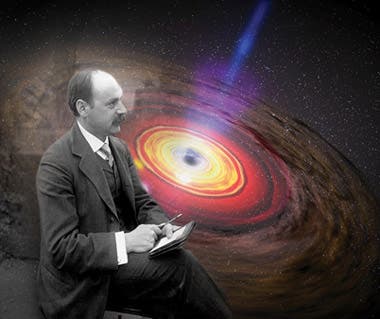
It wasn’t until 1967 that Princeton physicist John Wheeler coined the term ‘black hole’, but scientists have been describing massive objects crammed inside small volumes and theorizing what would happen for long before that. A common confusion is that Albert Einstein was the first to discover black holes, but that’s not true at all. While Einstein was responsible for developing the theory of general relativity in 1915 that predicts black holes, it was Karl Schwarzschild who used these equations to prove black holes do, indeed, exist.
After Schwarzschild solved the equations, he came up with the Schwarzschild Radius — a minimum threshold for a mass to collapse into a black hole. Any mass can theoretically become a black hole if this condition is met. Per this theory, if you were to squeeze the Earth in a small sphere with a radius of 8.9 mm, it should become a black hole. For the sun, the Schwarzschild Radius is three kilometers.
But even long before Einstein or Schwarzschild, in the 1790s, John Michell of England and Pierre-Simon Laplace of France independently suggested the existence of an “invisible star.” They calculated the mass and size – which is now called the “event horizon” – that an object needs in order to have an escape velocity greater than the speed of light. Their results were off, however, because they used Newton’s Laws instead of Einstein’s theory of general relativity.
7. Objects falling through a black hole become ‘spaghettified’, before disappearing into oblivion
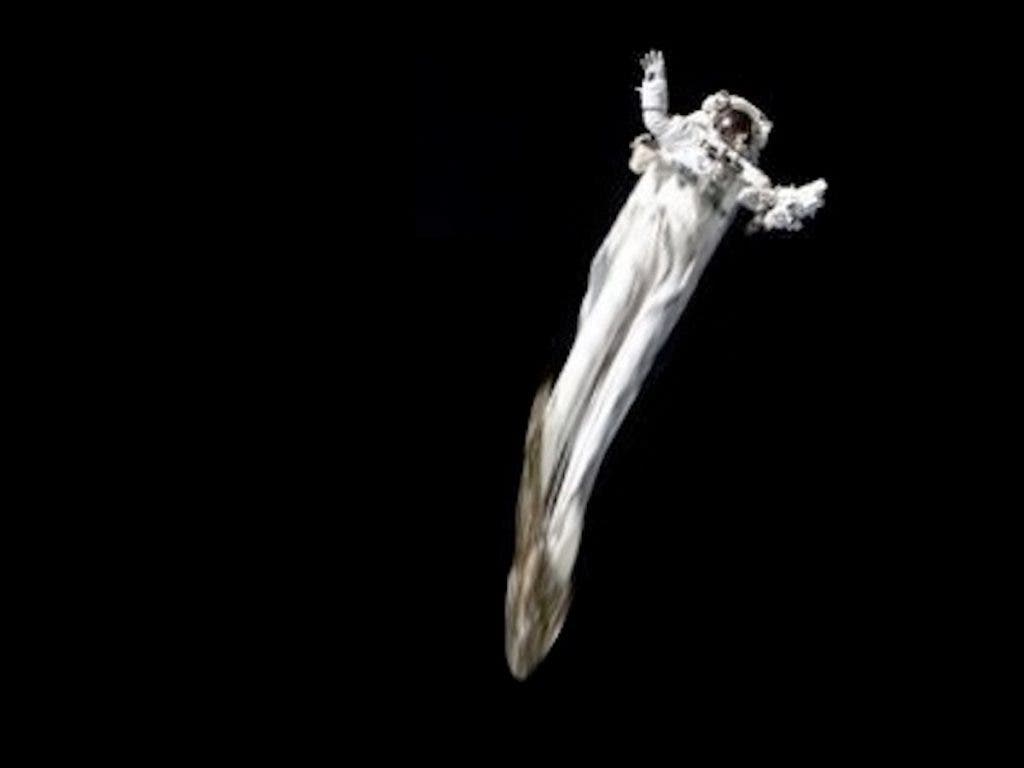
At the very center of a black hole is the gravitational singularity. It’s a one-dimensional point where a huge mass is squeezed into an infinitely small space. Density and gravity become infinite and the space-time curves infinitely. That’s a lot of infinity, enough to make your head go dizzy. In fact, not even the laws of physics can stand that much infinity, apparently. As American physicist Kip Thorne puts it, [the singularity] is “the point where all laws of physics break down”.
Equations crunched so far suggest that an object falling into a black hole becomes ‘spaghettified’ or stretched out as it nears the singularity. If it was you who was falling inside the black hole, you’d be able to see distorted images as light bends around your point of view. Eventually, the ripped apart object loses dimensionality completely and disappears into the singularity. Poof!
8. Black holes don’t suck

In fact, they’re oddly awesome! Smug replies aside, there’s this common misconception that black holes act as a huge vacuum cleaner of sorts. While it’s true black holes can pull matter in at incredible rates, it’s all due to gravity — not some mysterious fan. If you were to replace the sun with a black hole of equal mass, theoretically speaking, everything in the solar system should orbit as usual.
9. Black holes can stop time
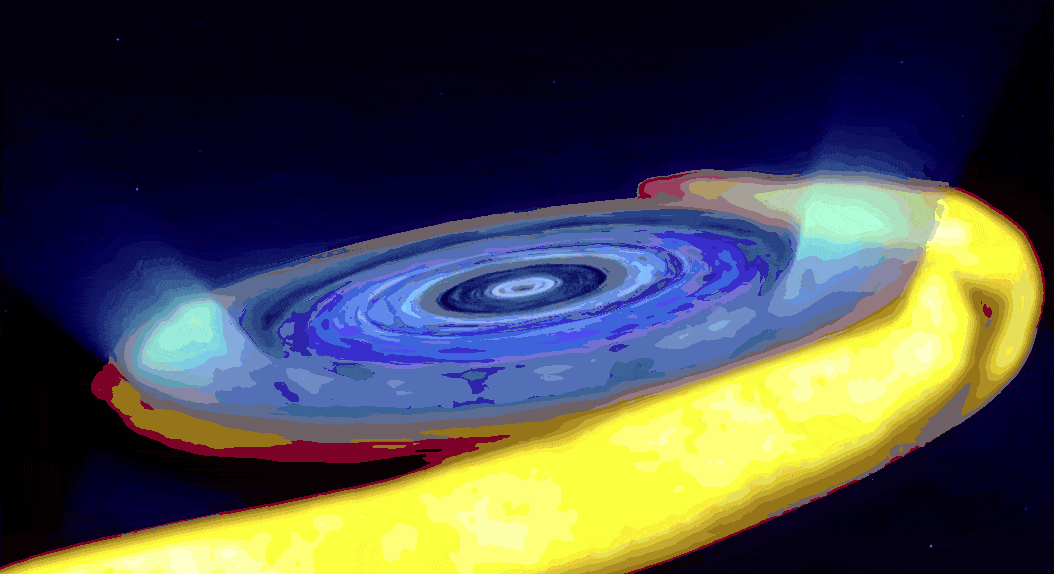
Were you to wear a spacesuit that would render you immune to the gravitational pull of a black hole, you would see objects passing through the black hole’s event horizon appear to slow down then freeze in time. In other words, it’s as if they had never passed through the event horizon (the boundary after which nothing can escape the clutches of a black hole). That’s because the space-time is distorted and the light takes longer to reach your telescope’s glass. In fact, it takes an infinitely long time. As time elapses, the light subsequently becomes red-shifted and dimmer as its wavelength becomes longer, eventually disappearing from the sight of the observer as it becomes infrared radiation, then radio waves.
10. Black holes might be able to grow infinitely large

Black Holes can keep growing because anything (gas, liquid or solid matter) that enters the event horizon gets sucked in. Theoretically, a black hole can grow indefinitely. However, there’s evidence that suggests that ultra-massive black holes found in the cores of some galaxies never seem to exceed 10 billion solar masses. Recent studies suggest that black hole may not physically grow beyond this mass because they would then begin to disrupt the accretion discs that feed them.
11. Black holes might be wormholes
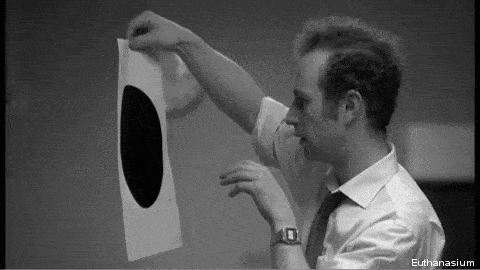
A wormhole or a Lorentzian wormhole is a sort of theoretical ‘tunnel’ through space-time, often used as the preferred mode of interstellar travel in movies like Star Trek. The opening is a shortcut through intervening space to another location in the Universe. That seems to be in stark contrast to a black hole which is less of a funnel and more of a meat grinder. However, some physicists claim that there are many characteristics which both black holes and wormholes share. Perhaps, a wormhole is a black hole and vice-versa.
Wait, it gets weirder…
12. Black holes might spawn new universes
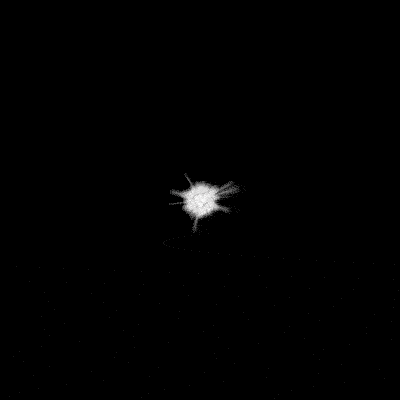
Our very own universe that we hold so dear might have actually been birthed by a black hole and the billions of black holes in the universe might, at their own turn, each spawn their own versions of the universe. As mentioned earlier, in the singularity the laws of physics break down. Some physicists speculate, however, that they actually are ‘reborn again, in a baby universe.’
“A star that collapses into a black hole very quickly squeezes down to infinite density and time stops — that’s according to general relativity. And basically that moment when time stops is deferred by quantum mechanics, by quantum uncertainty, and rather than collapsing to infinite density, the star collapses to a certain extreme density, and then bounces back and begins to expand again. And that expanding star becomes the birth of a new universe. The point where time ends inside a black hole becomes joined to the point where time begins in a Big Bang in a new universe,” says pioneering physicist Lee Smolin.
[no_toc]


